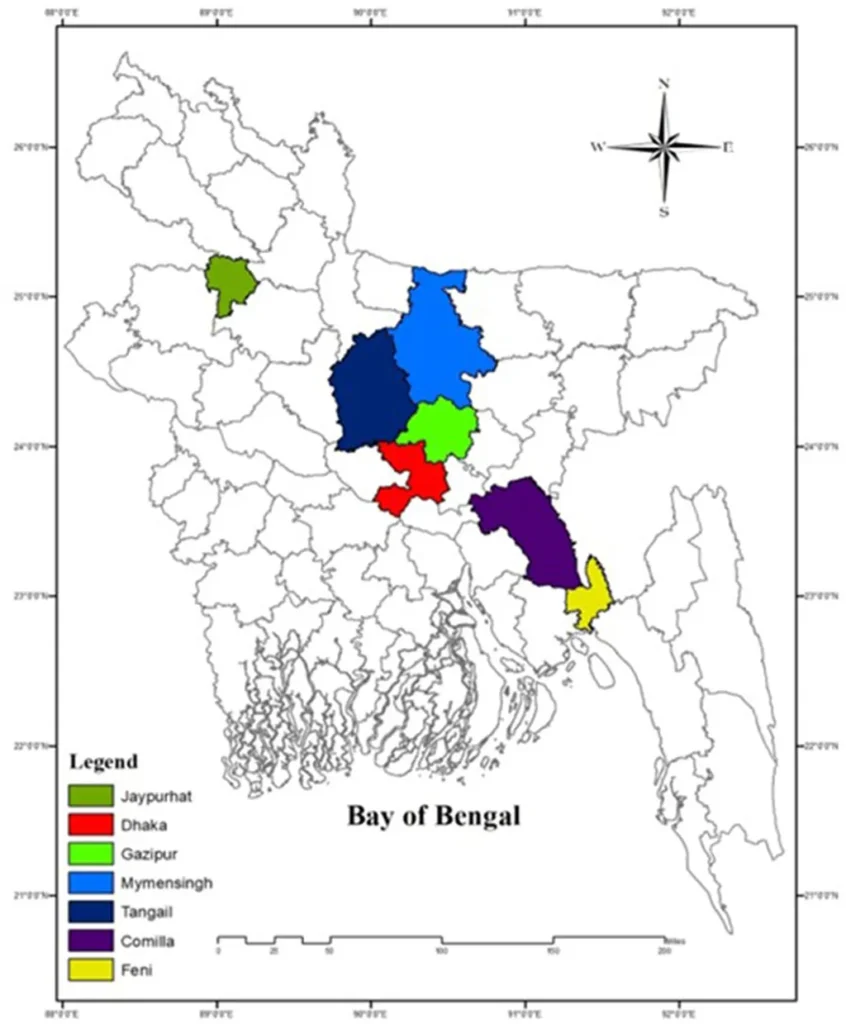In a groundbreaking study published in *Microbiology Spectrum*, researchers have unveiled the first complete genomic characterization of a genotype IIIb chicken anemia virus (CAV) strain in Bangladesh, shedding light on critical genetic variations that could influence viral virulence and immune evasion. The findings, led by Marjana Akter from the Department of Microbiology and Hygiene at Bangladesh Agricultural University, offer crucial insights into the molecular underpinnings of CAV, a pathogen that causes severe immunosuppression and significant economic losses in poultry.
Chicken anemia virus (CAV) is a highly infectious pathogen that has long plagued the poultry industry, leading to substantial economic losses due to immunosuppression and increased susceptibility to secondary infections. The limited genomic data available in Bangladesh has hindered effective disease control and prevention strategies. This new research aims to bridge that gap by providing a comprehensive analysis of a CAV strain from a field outbreak in Bangladesh.
The study involved clinical, pathological, and molecular analyses, including genome sequencing, genotyping, and assessment of viral protein structure. Clinically suspected chickens exhibiting symptoms such as anemia, depression, pale combs, and cyanotic wings underwent gross and histopathological examinations. Viral DNA was extracted from bone marrow samples and analyzed using PCR, followed by complete genome sequencing with next-generation sequencing techniques.
“Our findings reveal a 2,330 bp genome with 42% GC content, clustering within genotype IIIb and showing close genetic relatedness to a Chinese strain,” said lead author Marjana Akter. This genetic similarity suggests potential epidemiological links between the Bangladeshi and Chinese strains, highlighting the importance of regional surveillance and collaborative efforts in disease control.
Phylogenetic analysis and genotyping identified several nucleotide substitutions in the viral genomes, with the highest number of amino acid changes observed in the VP3 protein. Computational modeling revealed minor structural variations in VP1 and VP2, which may affect antigenicity and phosphatase activity. These insights are crucial for understanding the viral mechanisms that contribute to disease severity and immune evasion.
The study’s findings underscore the need for enhanced surveillance and targeted vaccine strategies to mitigate CAV-related losses in poultry. “The genetic variations we identified could influence viral virulence and immune evasion, making it essential to develop vaccines that are effective against these specific strains,” Akter explained. This research not only provides a deeper understanding of CAV evolution but also paves the way for more effective diagnostic and control measures to protect poultry populations.
The commercial impact of this research cannot be overstated. CAV-induced immunosuppression leads to increased mortality, reduced growth rates, and higher susceptibility to secondary infections, all of which translate to significant economic losses for poultry farmers. By identifying critical genetic variations and understanding their implications, this study offers a roadmap for developing targeted interventions that can safeguard poultry health and productivity.
As the agricultural sector continues to grapple with the challenges posed by infectious diseases, research like this serves as a beacon of hope. The insights gained from this study will undoubtedly shape future developments in the field, driving innovation in disease control and prevention strategies. With enhanced surveillance and targeted vaccines, the poultry industry can look forward to a future where the threat of CAV is significantly mitigated, ensuring the health and prosperity of poultry populations worldwide.

